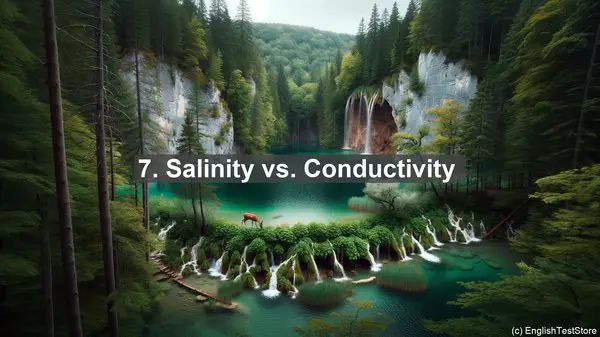Introduction: The Importance of Language Precision in Oceanographic Engineering
Welcome to our oceanographic engineering class. Today, we’re going to delve into an interesting topic: the commonly confused words in our field. While they may seem like simple terms, using them correctly is crucial for effective communication and avoiding misunderstandings in our work.
1. Buoyancy vs. Flotation
Buoyancy and flotation are often used interchangeably, but they have distinct meanings. Buoyancy refers to the upward force exerted on an object submerged in a fluid, while flotation specifically relates to an object’s ability to float on the surface of a liquid. Understanding the difference is essential when designing structures like floating platforms or underwater vehicles.
2. Tidal Range vs. Tidal Current
Tidal range and tidal current are two fundamental aspects of ocean tides. Tidal range refers to the vertical difference between high and low tides, while tidal current relates to the horizontal movement of water during tidal changes. Both factors play a significant role in coastal engineering and navigation, and mixing them up can lead to serious miscalculations.

3. Erosion vs. Sedimentation
Erosion and sedimentation are opposite processes, yet they often occur simultaneously. Erosion involves the removal of soil or rock material from a location, while sedimentation is the deposition of that material elsewhere. In coastal areas, understanding these processes is crucial for shoreline management and the protection of infrastructure.
4. Swell vs. Wave
Swell and wave are related to the movement of water, but they differ in their origins. Swell refers to long-period waves that have traveled a considerable distance from their generating area, often due to distant storms. Waves, on the other hand, are typically shorter and result from local wind activity. Differentiating between the two is vital for accurate wave forecasting.
5. Sound Speed vs. Sound Pressure
In underwater acoustics, sound speed and sound pressure are distinct parameters. Sound speed refers to the velocity at which sound waves travel through water, while sound pressure relates to the amplitude or intensity of those waves. Both factors are critical for various applications, such as underwater communication or mapping the seafloor.

6. Dissolved Oxygen vs. Oxygen Saturation
Dissolved oxygen and oxygen saturation are often used when discussing water quality. Dissolved oxygen refers to the actual amount of oxygen dissolved in water, while oxygen saturation is the percentage of the maximum amount of oxygen that the water can hold at a given temperature and pressure. Monitoring both parameters is essential for assessing aquatic ecosystem health.
7. Salinity vs. Conductivity
Salinity and conductivity are related to the measurement of water’s ability to conduct electrical current. Salinity specifically refers to the concentration of dissolved salts in water, while conductivity is a measure of how well water can transmit an electrical charge. Understanding these properties is crucial for studying ocean circulation and its impact on climate.
8. Current vs. Drift
Current and drift are both used to describe the movement of water, but they have different connotations. Current generally refers to a predictable, continuous flow in a particular direction, while drift implies a more random or uncontrolled movement. Distinguishing between the two is important for tasks like deploying instruments or tracking pollutant dispersion.
9. Upwelling vs. Downwelling
Upwelling and downwelling are vertical movements of water in the ocean. Upwelling refers to the upward motion of deeper, nutrient-rich water towards the surface, often associated with increased biological productivity. Downwelling, on the other hand, is the sinking of surface water to deeper layers. Recognizing these phenomena is vital for understanding marine ecosystems and their dynamics.
10. Algal Bloom vs. Red Tide
Algal bloom and red tide are terms used to describe the rapid growth of algae in water bodies. While they may seem interchangeable, red tide specifically refers to a harmful algal bloom that can have detrimental effects on marine life and human health. Being able to differentiate between the two is crucial for timely response and mitigation measures.
